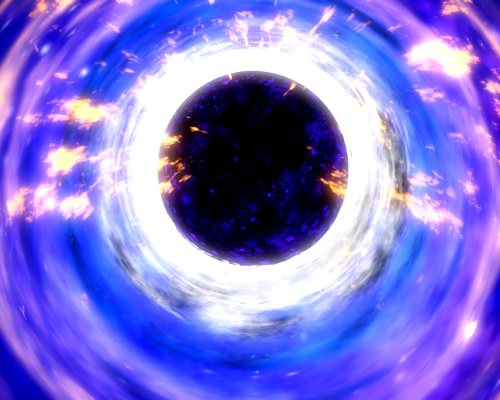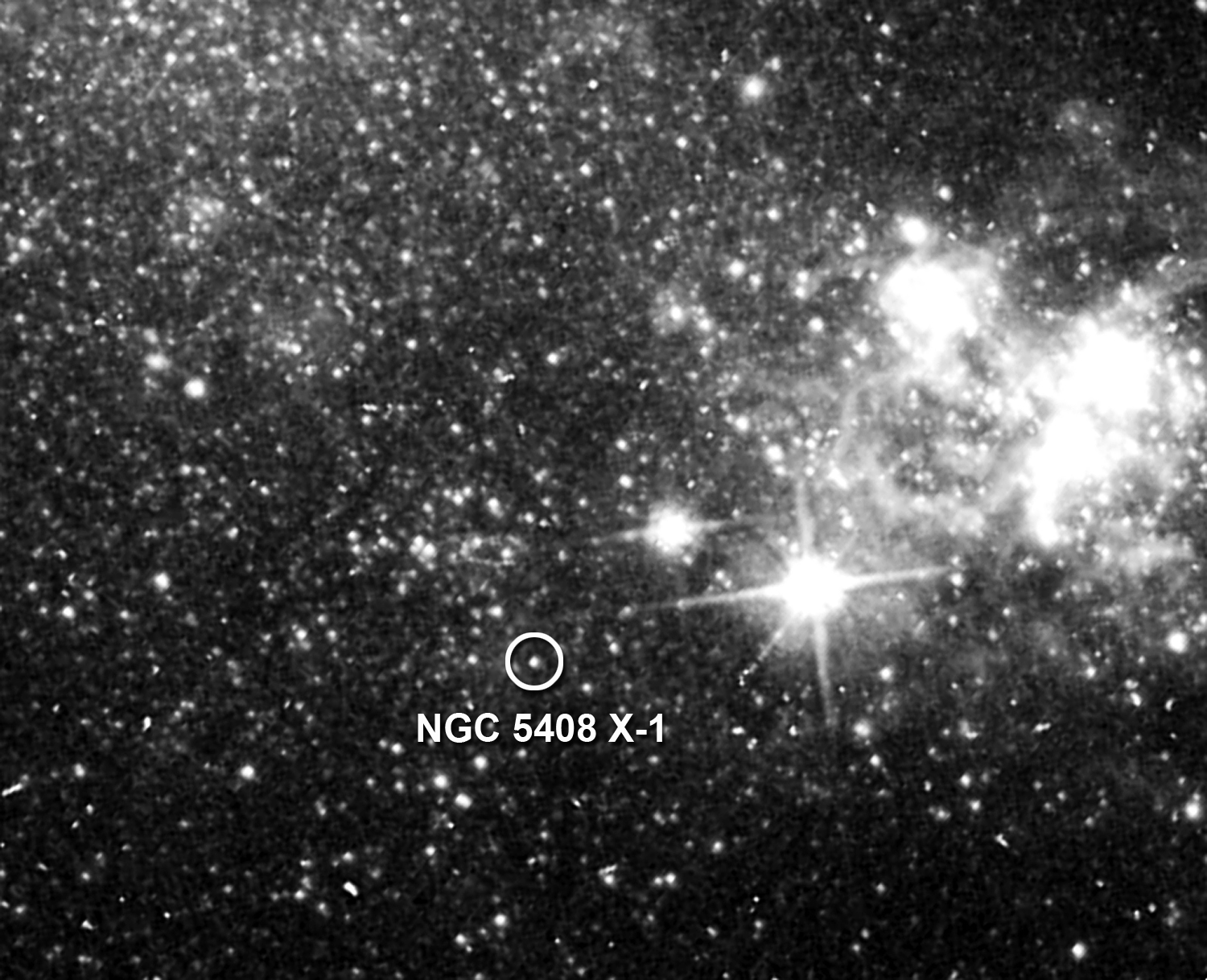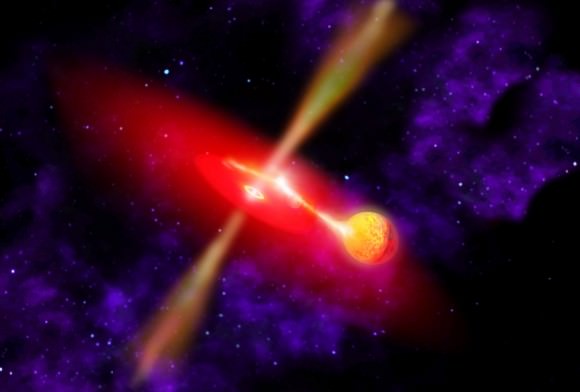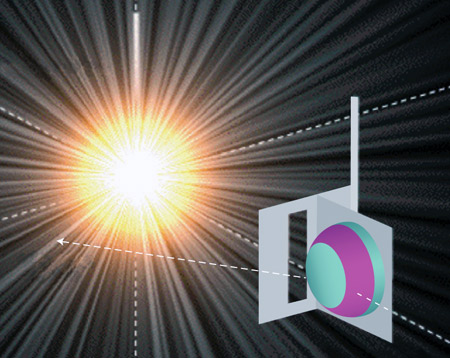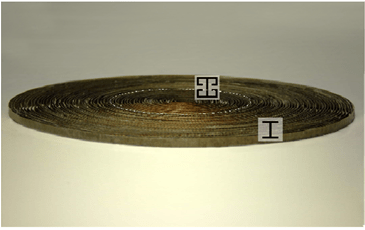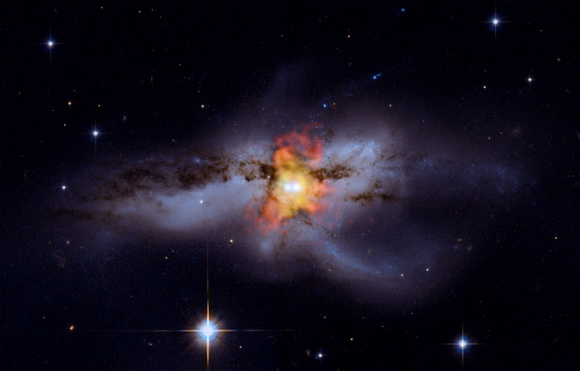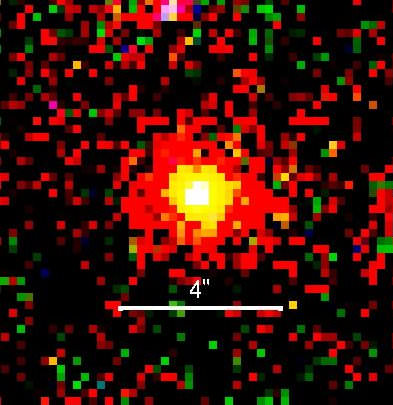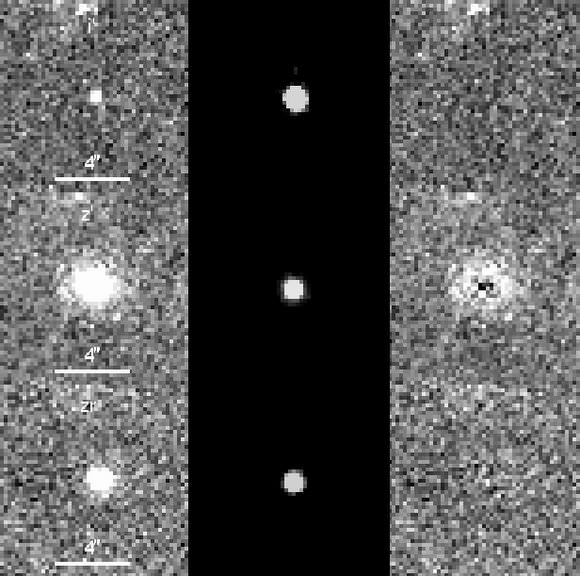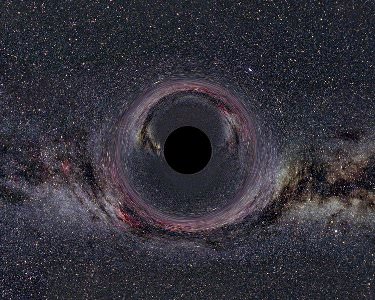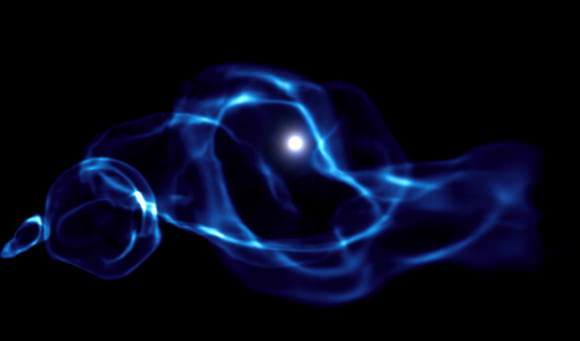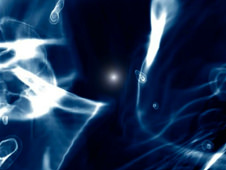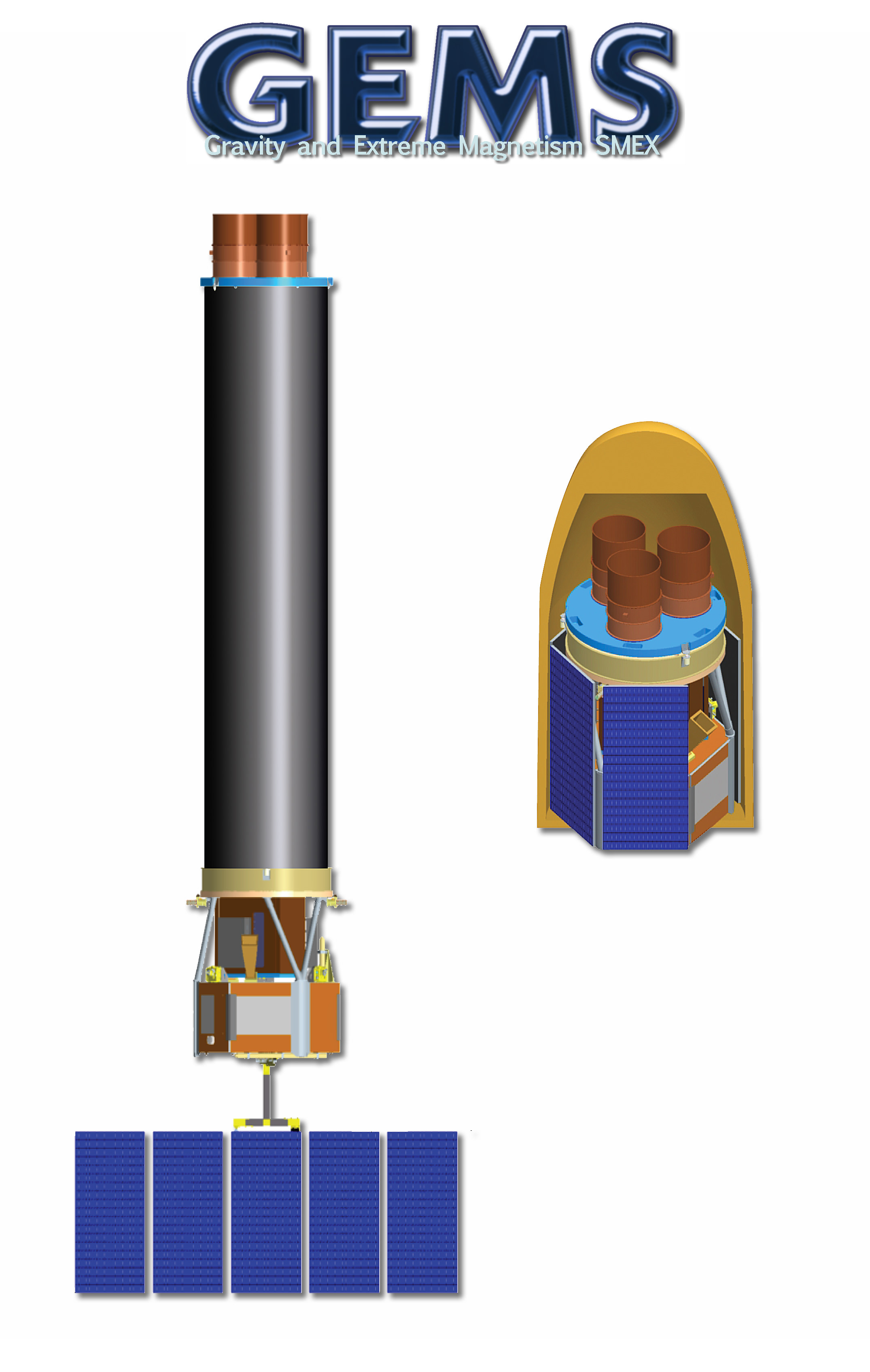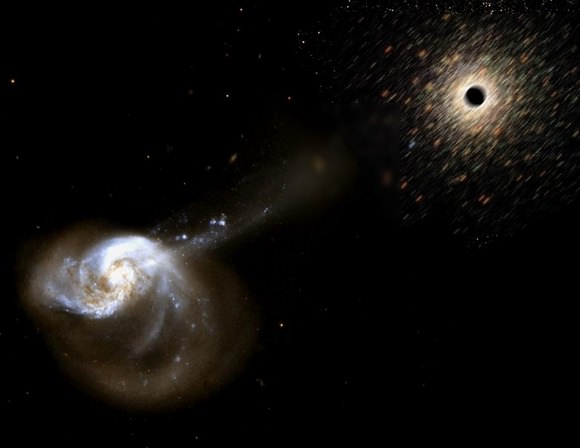[/caption]
What would happen if humans could deliberately create a blackhole? Well, for starters we might just unlock the ultimate energy source to create the ultimate spacecraft engine — a potential “black hole-drive” — to propel ships to the stars.
It turns out black holes are not black at all; they give off “Hawking radiation” that causes them to lose energy (and therefore mass) over time. For large black holes, the amount of radiation produced is miniscule, but very small black holes rapidly turn their mass into a huge amount of energy.
This fact prompted Lois Crane and Shawn Westmoreland of Kansas State University to calculate what it would take to create a small black hole and harness the energy to propel a starship. They found that there is a “sweet spot” for black holes that are small enough to be artificially created and to produce enormous amounts of energy, but are large enough that they don’t immediately evaporate in a burst of particles. Their ideal black hole would have a mass of about a million metric tons and would be about one one-thousandth the size of a proton.
To create such a black hole, Crane and Westmoreland envision a massive spherical gamma-ray laser in space, powered by thousands of square kilometers of solar panels. After charging for a few years, this laser would release the pent-up energy equivalent to a million metric tons of mass in a converging spherical shell of photons. As the shell collapses in on itself, the energy becomes so dense that its own gravity focuses it down to a single point and a black hole is born.
The black hole would immediately begin to disgorge all the energy that was compressed to form it. To harness that energy and propel a starship, the black hole would be placed at the center of a parabolic electron-gas mirror that would reflect all the energy radiated from the black hole out the back of the ship, propelling the ship forward. Particle beams attached to the ship behind the black hole would be used to simultaneously feed the black hole and propel it along with the ship.
Such a black hole drive could easily accelerate to near the speed of light, opening up the cosmos to human travelers, but that’s just the beginning. The micro-black hole could also be used as a power generator capable of transforming any matter directly into energy. This energy could be used to create new black holes and new power generators. Obviously, creating and harnessing black holes is not an easy undertaking, but Crane and Westmoreland point out that the black hole drive has a significant advantage over more speculative technologies like warp drives and wormholes: it is physically possible. And, they believe, worth pursuing “because it allows a completely different and vastly wider destiny for the human race. We should not underestimate the ingenuity of the engineers of the future.”

